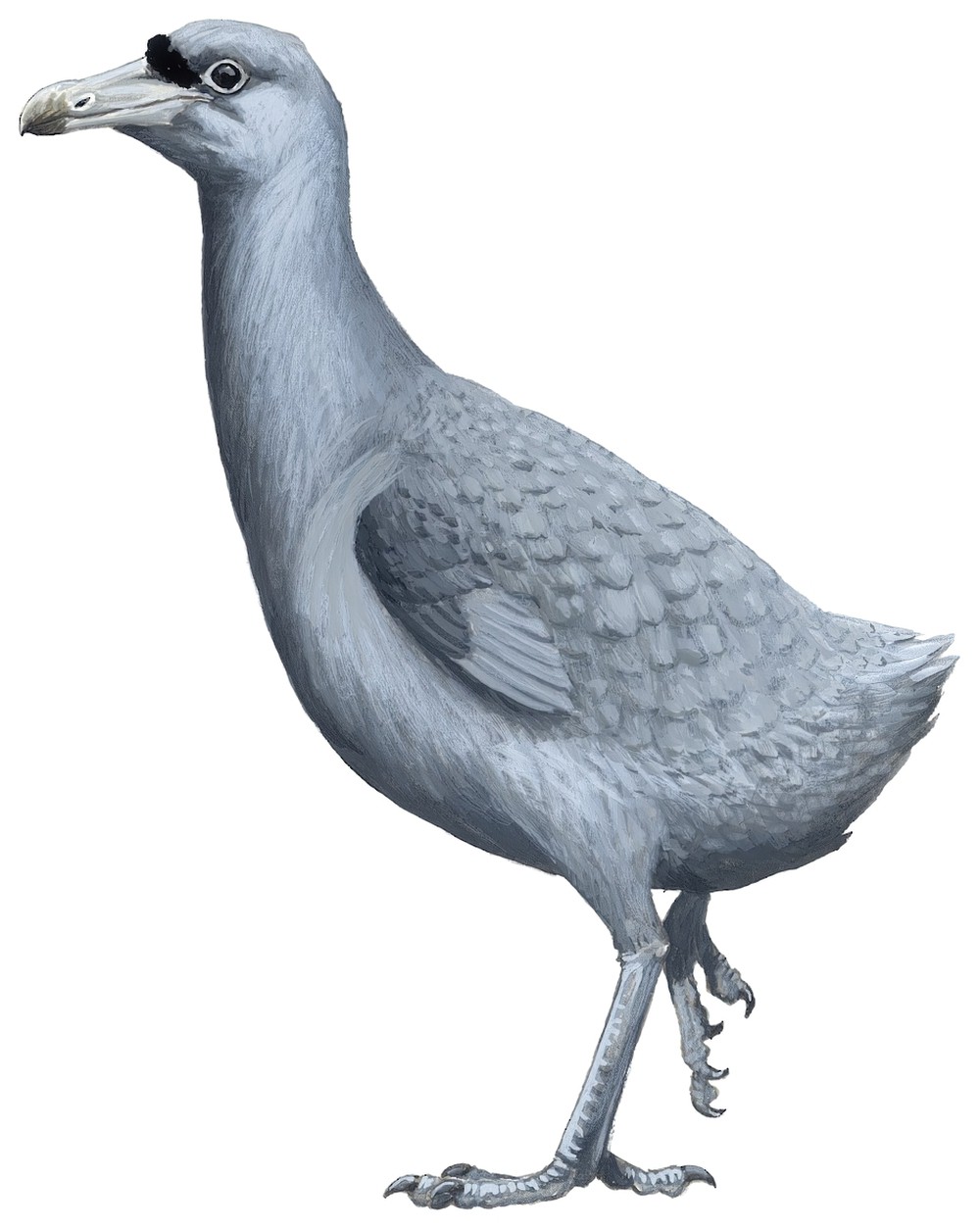Rodrigues Solitaire / Pezophaps solitaria

Rodrigues Solitaire
SCI Name:
Protonym: Didus solitarius Syst.Nat. 1 pt2 p.728
Taxonomy: Columbiformes / Columbidae / Pezophaps
Taxonomy Code: rodsol2
Type Locality: Rodriguez.
Author: Gmelin, JF
Publish Year: 1789
IUCN Status: Extinct
DEFINITIONS
PEZOPHAPS
‡ (Raphidae; Ϯ Rodrigues Solitaire P. solitaria) Gr. πεζος pezos walking < πεζευω pezeuō to go on foot; φαψ phaps, φαβος phabos pigeon; "The Brevipennate Bird of Rodriguez, the SOLITAIRE. (Pezophaps solitaria, nobis;— Didus solitarius of Gmelin.) ... I therefore propose to bestow upon the Solitaire the provisional generic name of PEZOPHAPS (from πεζος, pedestrian, and φαψ, a pigeon), in the confidence that future discoveries of the remaining parts of the skeleton will justify this denomination. The Columbine characters of the Solitaire will be fully described by Dr. Melville in the second Part of this work" (Strickland 1848); "Pezophaps Strickland, The Dodo and its Kindred, 1848, p. 46, 54. Type, by original designation, Didus solitarius Gmelin." (Peters 1937, III, 10). The flightless solitaires and dodos are considered related to the pigeons.
solitaria / solitaris / solitarius
L. solitarius solitary < solus, solius alone.
● According to Fraser in P. Sclater 1859a, the Solitary Shrike Tyrant was called “el Solitario” by the Spanish settlers of Ecuador (Agriornis).
● ex “Coucou Solitaire” of Levaillant 1806, pl. 206 (Cuculus).
● ex “Green-headed Bunting” of Latham 1785 (syn. Emberiza hortulana).
● “Solitary Sparrow ... It is wont to sit alone on the tops of ancient Edifices and Roofs of Churches, singing most sweetly, especially in the Morning, whence it took its name” (Ray 1678); "95. TURDUS. ... solitarius. 14. T. cæruleus, remigibus rectricibusque nigris, abdomine lineolis cinereis undulato. Passer solitarius. Willugb. orn. 191. Raj. av. 66. Edw. av. 18. t. 18. Olin. av. 14. Act. Ups. 1750. p. 21. Habitat in Oriente. Mas cæruleus; Femina cinerea, subtus lineolis albis & cinereis undulata." (Linnaeus 1758) (Monticola).
● (Statius Müller 1776) ex “Merle solitaire de Manille” of d’Aubenton 1765-1781, pl. 564, fig. 2 (syn. Monticola solitarius philippensis).
● (J. Gmelin 1789) ex “Passera solitaria” of Olina 1622, “Solitary Sparrow” of Willughby 1676, “Passer solitarius” of Ray 1713, “Merula solitaria” of Brisson 1760, “Merle solitaire” of de Buffon 1770-1783, and “Solitary Thrush” of Latham 1783 (syn. Monticola solitarius).
● ex “Suirirí chorreado todo” of de Azara 1802-1805, no. 196 (Myiodynastes).
● ex “Solitaire” of Leguat 1708, and de Buffon 1770-1783, and “Solitary Dodo” of Latham 1785: “not met with in flocks, scarcely more than two being found together” (‡Pezophaps).
● ex “Solitary Parrot” of Latham 1787 (Phigys).
● ex “Japú negro” of de Azara 1802-1805, no. 58 (Procacicus).
● ex “Oiseau Solitaire” of Carré 1669, and “Solitaire” of Dubois 1674 (this bird was formerly thought to be a species of dodo Raphus) (‡Threskiornis).
● ex “Ynambú Mocoicogoé” of de Azara 1802-1805, no. 332 (Tinamus).
● "This new species inhabits the watery solitudes of our highest mountains during the summer, from Kentucky to New York" (A. Wilson 1813) (Tringa).
UPPERCASE: current genus
Uppercase first letter: generic synonym
● and ● See: generic homonyms
lowercase: species and subspecies
●: early names, variants, mispellings
‡: extinct
†: type species
Gr.: ancient Greek
L.: Latin
<: derived from
syn: synonym of
/: separates historical and modern geographic names
ex: based on
TL: type locality
OD: original diagnosis (genus) or original description (species)












